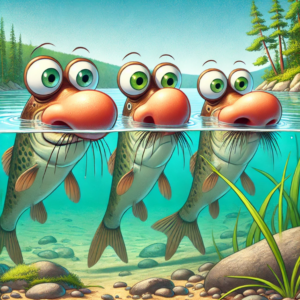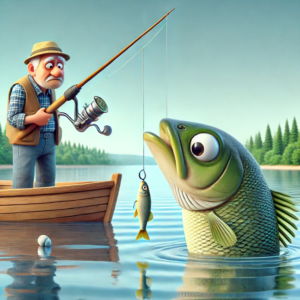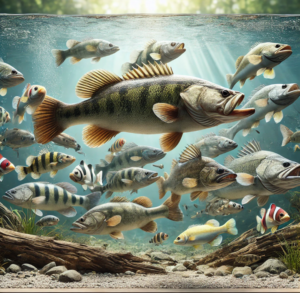When it comes to survival in aquatic environments, the ability to detect scent is one of the most crucial senses a fish can have. Whether it's locating food, avoiding predators, or navigating murky waters, a fish’s olfactory system plays a significant role in its daily life. Fish rely on specialized olfactory receptors to process smells in the water, and some species have far superior scent-detecting abilities than others.
In this article, we will rank 17 Lake Wallenpaupack fish species in order of their ability to smell, starting with the best. This ranking is based on scientific studies of olfactory receptor density, behavioral responses to scent, and anecdotal evidence from anglers and researchers.

1. Catfish
Catfish are widely regarded as the kings of smell. Their olfactory system is among the most developed in the animal kingdom, boasting millions of sensory receptors. Their entire bodies are covered with chemoreceptors, making them exceptionally skilled at detecting even the faintest odors in the water. This heightened sense of smell helps them locate prey in muddy or dark environments.
2. Carp
Carp have an exceptional sense of smell, which they use to detect food sources even in murky waters. Their olfactory bulbs are highly developed, allowing them to pick up on chemical signals in the water, including the presence of predators and mates.
3. Walleye
Walleye are primarily nocturnal hunters and rely on their sense of smell to track prey in low-visibility conditions. Their olfactory receptors are highly sensitive, which allows them to detect minute traces of scent carried by currents.
4. Northern Pike
Northern Pike have a well-developed sense of smell that helps them locate prey, especially in turbid environments. These ambush predators use a combination of sight and scent to detect injured fish and other food sources.
5. Muskie
Closely related to the Northern Pike, the Muskellunge also has a strong sense of smell, which aids in hunting. Although it relies more on sight for striking, its olfactory system helps detect distressed prey in the water.
6. Striped Bass
Striped Bass have an impressive olfactory ability that allows them to locate baitfish and other prey over long distances. Their keen sense of smell helps them migrate and detect chemical cues in the water.
7. Brown Trout
Brown Trout have a highly developed olfactory system, which helps them recognize the chemical signatures of their home waters and detect food sources. Their ability to detect amino acids in the water makes them highly effective predators.

8. Rainbow Trout
Similar to the Brown Trout, Rainbow Trout have an excellent sense of smell that helps them find food and avoid predators. They are also known to use their olfactory senses to detect the scent of potential mates.
9. Alewife
As a forage fish, Alewife rely heavily on their sense of smell to detect plankton and avoid predators. Their olfactory sensitivity allows them to sense changes in water chemistry, which helps them navigate their environment.
10. Largemouth Bass
Large Mouth Bass primarily rely on sight and vibration to hunt, but their sense of smell still plays an important role. They can detect certain scents in the water, particularly when searching for prey in low-light conditions.

11. Smallmouth Bass
Small Mouth Bass have a similar olfactory capability to their Large Mouth relatives, though they tend to rely more on vision and lateral line detection when hunting.
12. Yellow Perch
Yellow Perch have a moderately developed sense of smell, which they use to locate food and avoid predators. They can detect chemical signals in the water but are more reliant on sight.
13. Chain Pickerel
Chain Pickerel are ambush predators that rely more on sight than smell, but their olfactory receptors still allow them to detect prey and environmental cues.
14. Rock Bass
Rock Bass have a limited but functional sense of smell. They rely primarily on sight and vibration, but they can detect chemical cues in the water to some extent.
15. Crappie
Crappie are primarily sight feeders but do possess olfactory abilities that help them locate food when visibility is poor. Their sense of smell is not as developed as other predatory fish.
16. Bluegill
Bluegills have a weaker sense of smell compared to other fish on this list. They primarily use their vision and lateral line to detect prey, though they can still respond to scent cues in the water.
17. Sunfish
Sunfish have the weakest sense of smell among the fish listed here. They are heavily reliant on sight for feeding and predator detection, with olfaction playing a minor role.
While all fish possess olfactory receptors, the effectiveness of their sense of smell varies greatly from species to species. Catfish and Carp dominate the list with their unparalleled ability to detect scents, while species like Sunfish and Bluegill rely far more on sight and vibration than on olfaction. Understanding these differences can help anglers and researchers better appreciate the role of scent in fish behavior and improve their fishing techniques accordingly.


